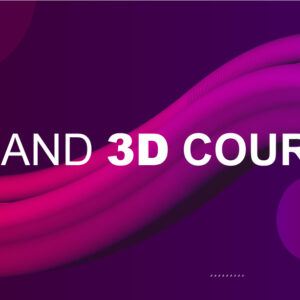
Login
X
- Home
- About Us
- Courses
- Graduation
- Diploma Certificate
- Professional Diploma
- Special sessions / Aptitude boost up
- News & Events
- Student zone
- Placement
- Gallery
- FAQ
- Contact Us

In recent years, animated programming has grown in popularity, especially as pandemic limitations caused the cancellation of live-action films. But if you want to ride that wave and start a career in this industry, you might be curious about 2D animation vs. 3D animation courses.
Numerous animated films are released annually in various formats, from 2D cartoons to 3D features. This industry is renowned for its adaptable nature, which offers many lucrative employment options. You can enter this field at any time if you have the necessary talents and a good outlook, but it will take time. You must begin with the appropriate training and develop a solid command of the most popular applications in this sector. To accomplish this, you must enroll in a professional animation school from a reputable training facility.

Firstly, one needs to know what is 2D animation vs. 3D animation courses. India is a great place to choose as a career option because it is known as the global centre for computer 2D and 3D animation. This field offers a profitable career path; therefore, those who are interested should enroll in accredited animation schools for professional animation training, along with other skill sets, including drawing proficiency, creative problem-solving, and original ideas.
According to market statistics, growth of 20%, or $1200 billion in market value, is anticipated. This is an excellent development because it will increase the demand for qualified professionals in various settings. The Indian 3D sector offers a variety of fascinating opportunities in the fields of modelling, rigging, simulation, rendering, etc.
This 2D kind involves two-dimensional system development and motion capture of static images. This style is typically a flat presentation of ideas with just one visual angle. A simple rectangular box is an example of this motion system in two dimensions.
There are two methods for creating 2D animation. Drawing any object position (structure) on a piece of paper is the initial or standard method. Then, these frameworks are quickly moved one after the other to make the impression of one motion. Excellent illustration skills and wonderful initiative are needed for this process, which is acknowledged as a conventional 2D computer simulation.
The entire process of 3D animation is computer-based and mechanical. Rigged means that an object or character has skeletal structures that can be controlled by software. Rigged objects and characters are created as 3D models.
The animator can basically move and posture the models as real objects once they have been produced and set up.
You can make only some frames in 3D and use keyframes to place a model at specific points and have the software interpolate the frames in between. Additionally, switching camera angles is simple and doesn’t need redoing any drawings. These are the main things about 2D animation vs. 3D animation courses.
Worldwide, there is a significant market for both 2D and 3D animated entertainment. It is employed in a variety of media, including motion pictures, television programs, advertisements, video games, corporate presentations, product demonstrations, and engineering representations.
Phone: 0495 272 2242